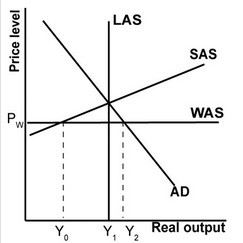The health care system in ________ is referred to as a universal health insurance system, under which every resident is required to enroll in either a private or the government-provided health insurance program
A) Canada
B) Japan
C) the United Kingdom
D) the United States
Answer: B
You might also like to view...
Macroeconomics differs from microeconomics in that macroeconomics focuses on:
A. the performance of national economies and ways to improve that performance. B. prices in specific markets. C. individual choices and group behavior in individual markets. D. production in specific markets.
A $2,000 decrease in investment will shift the aggregate expenditures curve down by:
A. exactly $2,000 and will decrease the equilibrium level of real GDP by exactly $2,000. B. exactly $2,000 and will decrease the equilibrium level of real GDP by less than $2,000. C. exactly $2,000 and will decrease the equilibrium level of real GDP by more than $2,000. D. less than $2,000 and will decrease the equilibrium level of real GDP by less than $2,000.
In the graph shown, an upward shift in the WAS curve:
A. lowers the trade deficit, because domestic producers are more competitive. B. raises domestic consumption, because domestic producers will produce more. C. lowers domestic production, because domestic consumption has fallen. D. raises globalized potential output, because U.S. producers are less competitive.
According to many liberals, the Bureau of Labor Statistics
A. overstates the number of employed and understates the unemployment rate. B. overstates the number of employed and overstates the unemployment rate. C. understates the number of employed and overstates the unemployment rate. D. understates the number of employed and understates the unemployment rate.